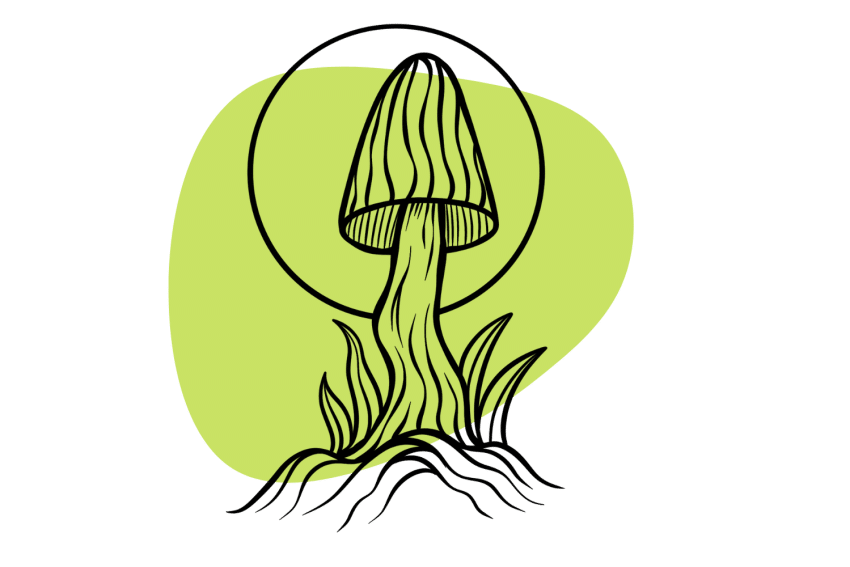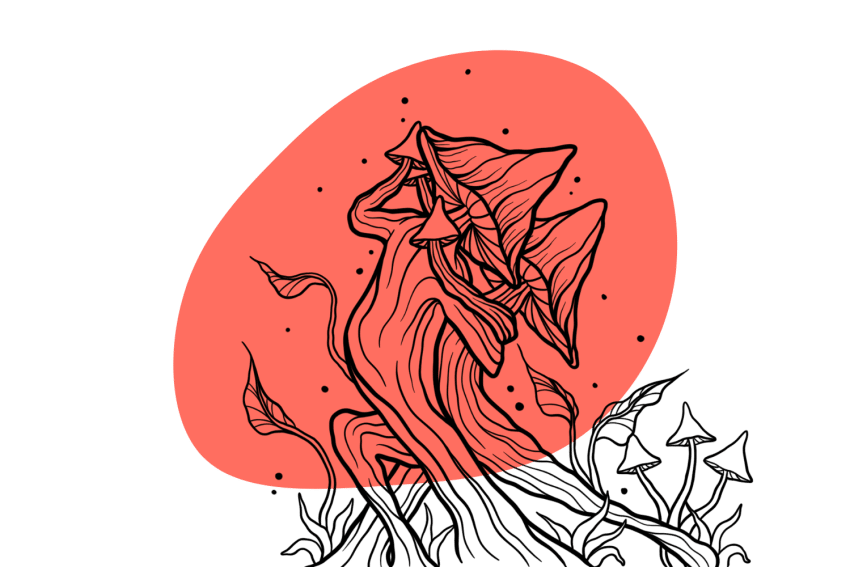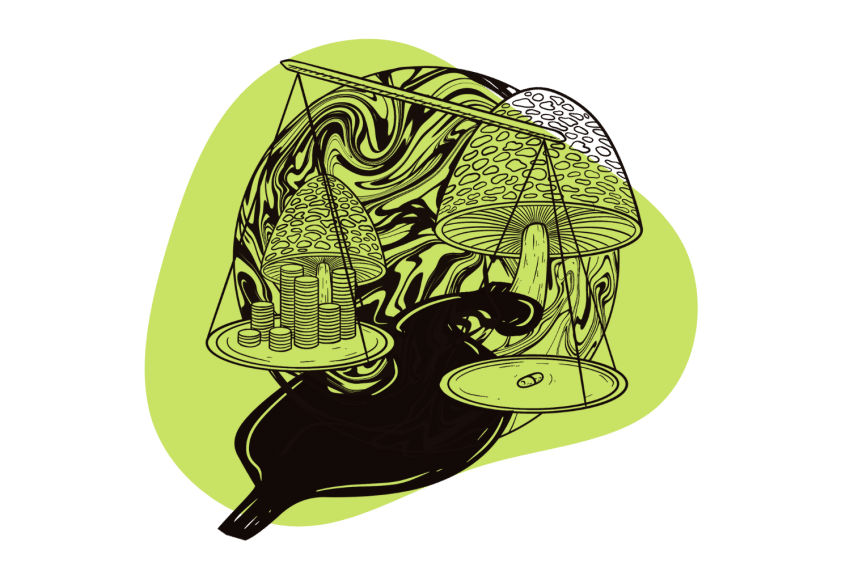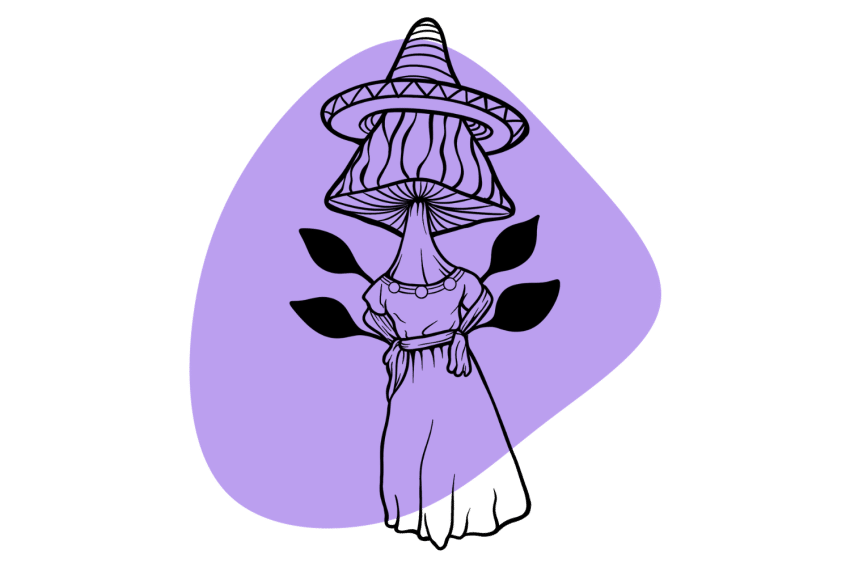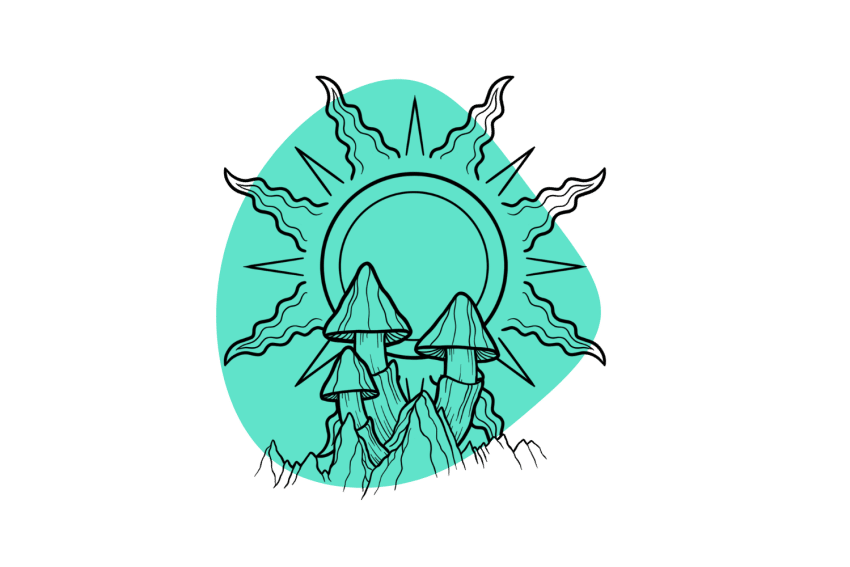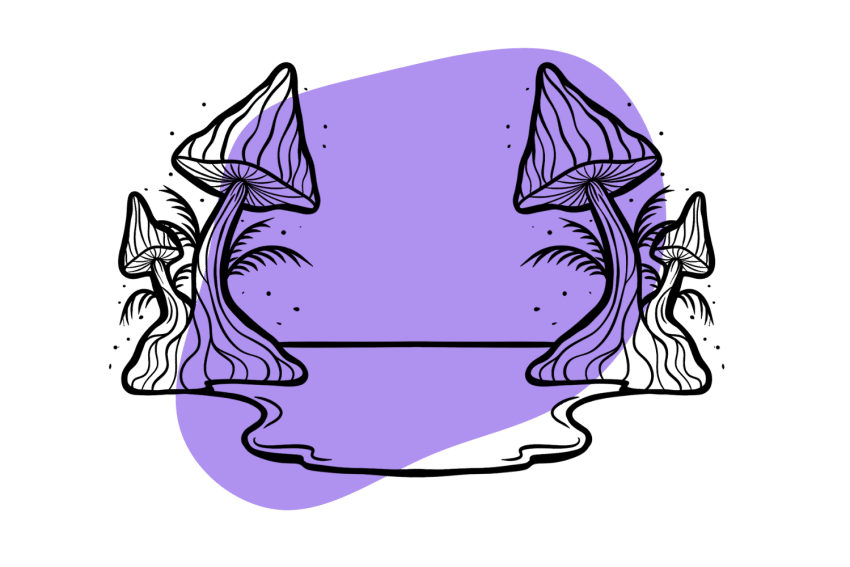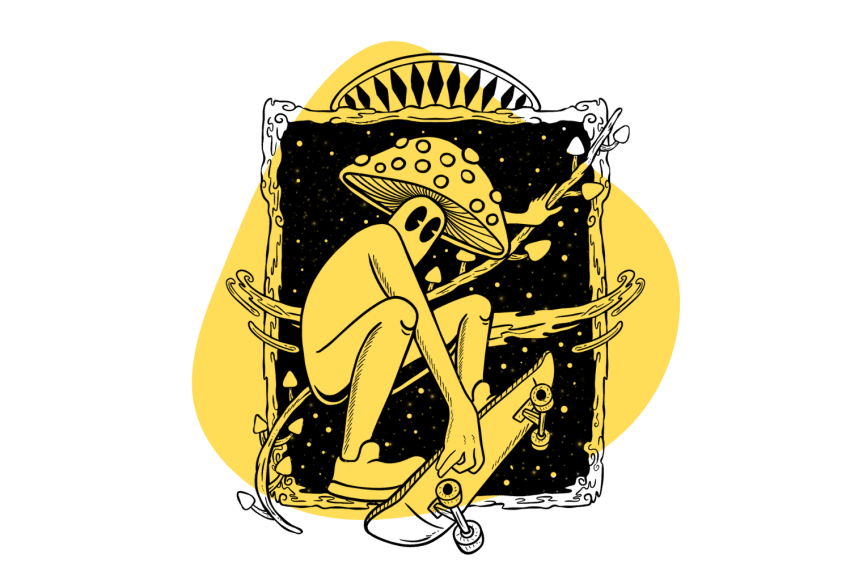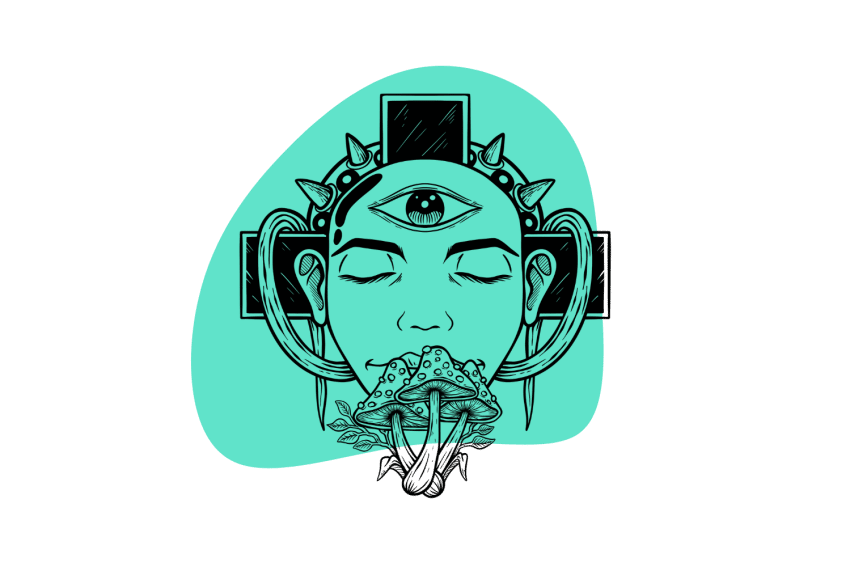Hillbilly Pancake Strain: A Rare Strain of Psilocybe cubensis
If you’re lucky enough to find Hillbilly Pancake spores and cultivate them successfully, you’ll be rewarded with a tray full of bizarre-looking mushrooms perfectly sized for microdosing.
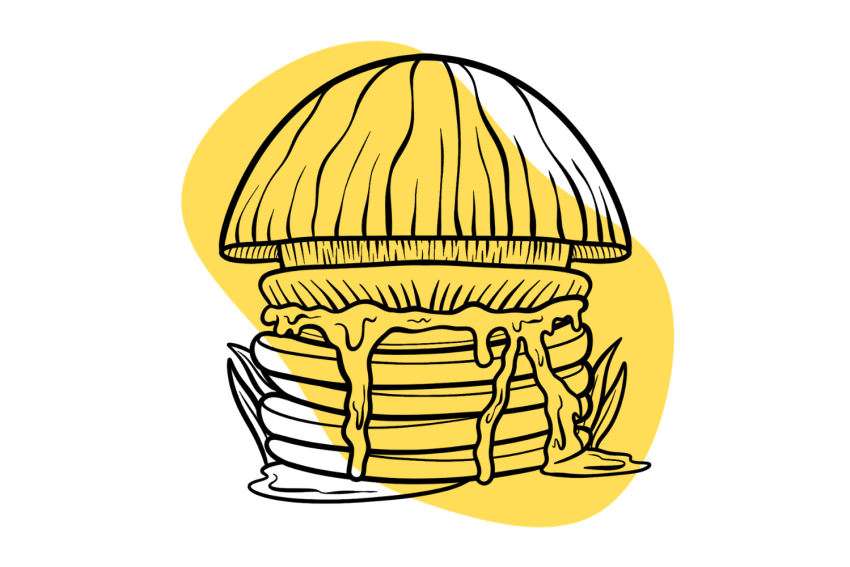
The Hillbilly Pancake strain is a genetic off-shoot of the original Hillbilly strain — famed for its high levels of norpsilocin but low levels of psilocybin. This rare variant produces short stems and flat “pancake-like” caps that are umbilicate — which means they have a depressed (concave) center. This central depression can make the caps look more like donuts than pancakes.
Hillbilly Pancake genetics are very difficult to find online. They haven’t made it to the major spore vendors just yet. However, we’ve seen samples from other cultivators and can confirm these mushrooms are totally bizarre.
This Psilocybe cubensis strain isn’t particularly potent. It produces similar psilocybin and psilocin levels to its mother strain “Hillbilly,” producing less than 0.60% total tryptamines in all the dried samples tested so far. This strain isn’t going to blow your mind, but it’s an excellent choice for those looking for a “microdose” mushroom, or something to grow that’s rare and completely unique-looking.
Hillbilly Pancake Strain Specs
| Potency | Weak |
| Cultivation | Beginner |
| Species | Psilocybe cubensis |
| Substrate Recommendation | Rye Grain or BRF (Brown Rice Flour & Vermiculite) |
| Sold By | Not Available |
History of the Hillbilly Pancake Strain
The history of the Hillbilly Pancake strain is rather blurry. We’re unsure of who created this strain and when it was created. However, we do know that it’s an isolated mutation of the original Hillbilly strain.
The original Hillbilly strain was discovered sometime during the 1990s. The first sample was collected in Arkansas by a Mycotopia user known by the online handle “Hillbilly.”
The original strain was popular for several years before more potent strains eventually overshadowed it. However, it gained a resurgence in 2022 when it won an award as “Microdose Champion” in a Psilocybin Cup. Since its win, the Hillbilly strain has become a popular choice among cultivators who microdose psilocybin.
Now, Hillbilly spore samples are available from several major online spore vendors. Hopefully, as the strain’s popularity grows, the Hillbilly Pancake strain will make an emergence in the spore market too.
Related: Magic Mushroom Strain Guide (100+ Strains Explained)
Potency & Psilocybin Content
The Hillbilly Pancake strain produces an identical tryptamine profile to the original Hillbilly strain. The Hillbilly series isn’t famed for its potency, having a total tryptamine level of less than 0.60%.
A sample of the original Hillbilly strain gained a podium finish in the Spring 2022 Oakland Hyphae Psilocybin Cup. The sample — grown by the cultivator “SYE” — won a place under the “Microdose Champion” section of the Cup. Its low psilocybin levels and higher levels of norpsilocin (a less psychedelic derivative of psilocin) won it the title.
The Hillbilly Pancake strain isn’t an option for those who want to grow mind-blowing mushrooms, but it’s an excellent choice for people who wish to microdose magic mushrooms.
Hillbilly Pancake Variations & Genetic Relatives
The Hillbilly Pancake strain has a couple of genetic relatives that share similar potency and cultivation traits but exhibit different characteristics.
Here are the Hillbilly Pancake strain’s variants:
1. The Hillbilly Strain
The Hillbilly strain was created by a mycologist called “Hillbilly.” The original sample was collected from Arkansas in the Southern United States sometime in the 1990s.
More potent strains have overshadowed Hillbilly over the years, but it’s making a comeback after its “Microdose Champion” win in the Spring 2022 Psilocybin Cup. It’s an easy strain to grow and can produce good yields over several flushes before succumbing to mold growth.
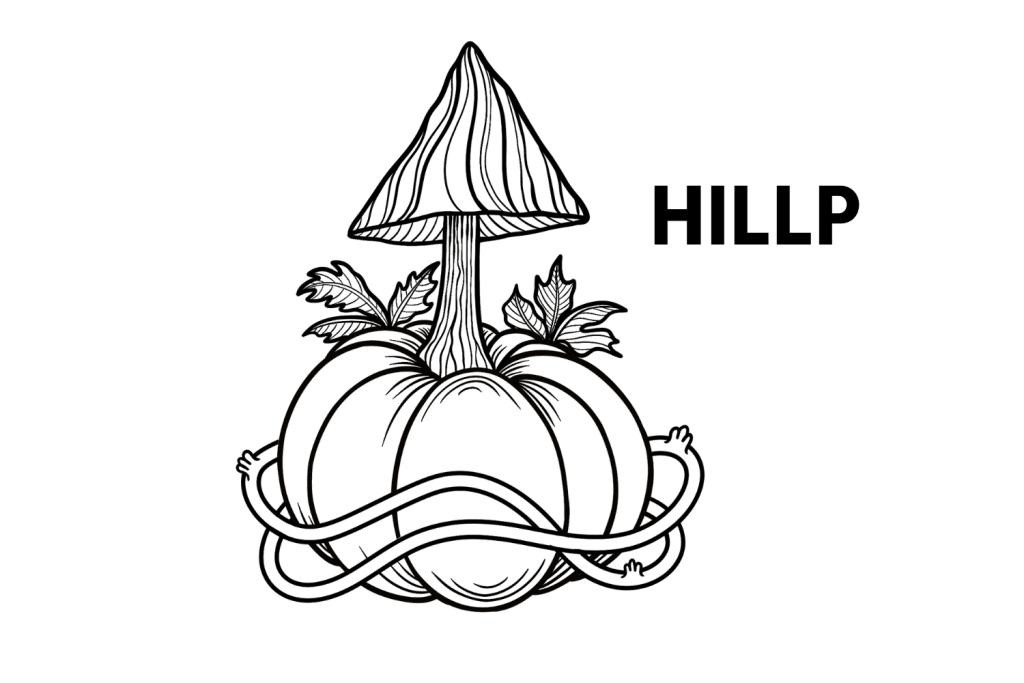
2. Hillbilly Pumpkin
The Hillbilly Pumpkin strain is a genetic off-shoot of the original strain. It produces large “fatass” mushrooms that are so round they look like tiny pumpkins. Some cultivators have produced fruits that weigh as much as 200 grams fresh.
Other than its unique appearance, the Hillbilly Pumpkin strain is identical to the original strain. The potency, contamination resistance, and yield potential of the strain are similar. This isn’t a potent strain, but the large mushrooms and prolific flushes make up for its lack of psilocybin.
Where to Buy Hillbilly Pancake Spores
Unfortunately, Hillbilly Pancake spore samples are almost impossible to obtain. They aren’t available from any major spore vendors.
Your best bet, if you want to source Hillbilly Pancake Spores samples, is to enquire on a magic mushroom SubReddit or a forum such as Shroomery. Otherwise, the genetics can be obtained by isolating a “Pancake” mutation during cultivation of the original Hillbilly strain.
How to Grow Hillbilly Pancake Mushrooms
Hillbilly Pancake shrooms should be as easy as the original Hillbilly strain to grow. However, the trouble comes with finding reliable spore samples.
If you’re lucky enough to find a reliable spore sample, these shrooms can be cultivated using PF Tek — a simple technique requiring little investment, time, and knowledge. This strain will do well on most substrates, but we recommend rye grain or a mixture of brown rice flour, water, and vermiculite (BRF).
Learn how to perform PF Tek: How To Grow Magic Mushrooms: The Easy Way.
Unfortunately, if you can source spores for this strain, they’ll probably come in the form of a spore print or a spore-covered swab. Growing mushrooms from samples such as these requires you to isolate the spores on agar to remove any contamination on the paper or swab.
Spore prints and swabs can be grown by utilizing “Agar Tek.”
Other Unusual-Looking Psilocybe cubensis Strains
Hillbilly Pancake produces some utterly bizarre-looking mushrooms. If you’re in the market for an unusual strain to grow, it’s not the only option — Hillbilly Pancake spore samples can be hard to come by. Luckily, some other unique-looking strains are a little easier to get ahold of.
Here are five of our favorite “unusual” strains of Psilocybe cubensis:

1. Enigma
The Enigma strain is a unique strain of Psilocybe cubensis that produces truffle-like growths rather than typical “mushroom-shaped” fruits. The unusual mushrooms take a long time to form, sometimes up to four months.
Those who are patient enough to grow Enigma will get shrooms of above-average potency. This strain produces an average tryptamine content of 0.85%, but several samples entered into the Psilocybin Cup have produced much higher levels, some up to 1.67%.
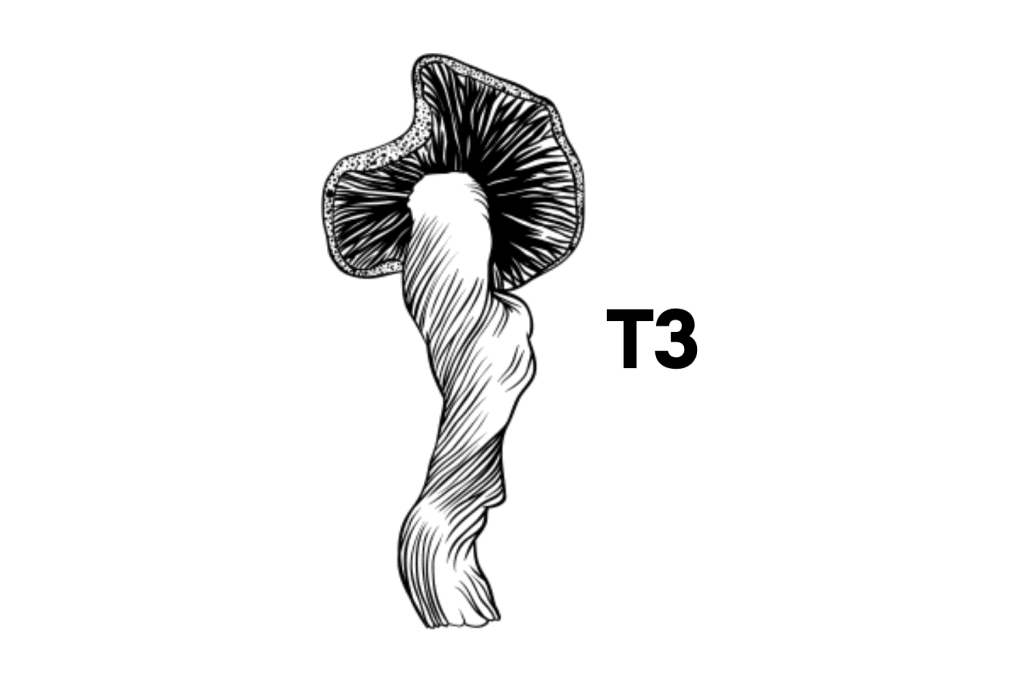
2. The T3 Strain
T3 is a strain from Southeast Asia that closely resembles the Koh Samui strain. However, it produces three distinct growth patterns that change from flush to flush.
There are better strains than this for cultivators looking for huge yields and consistent results, but it suits the mushroom connoisseur who wants to be kept on their toes with all manner of different-looking shrooms from a single stock.
The potency of the T3 strain is average and just as inconsistent as its growth characteristics. The average T3 shroom produces between 0.50% and 0.90% total tryptamines.
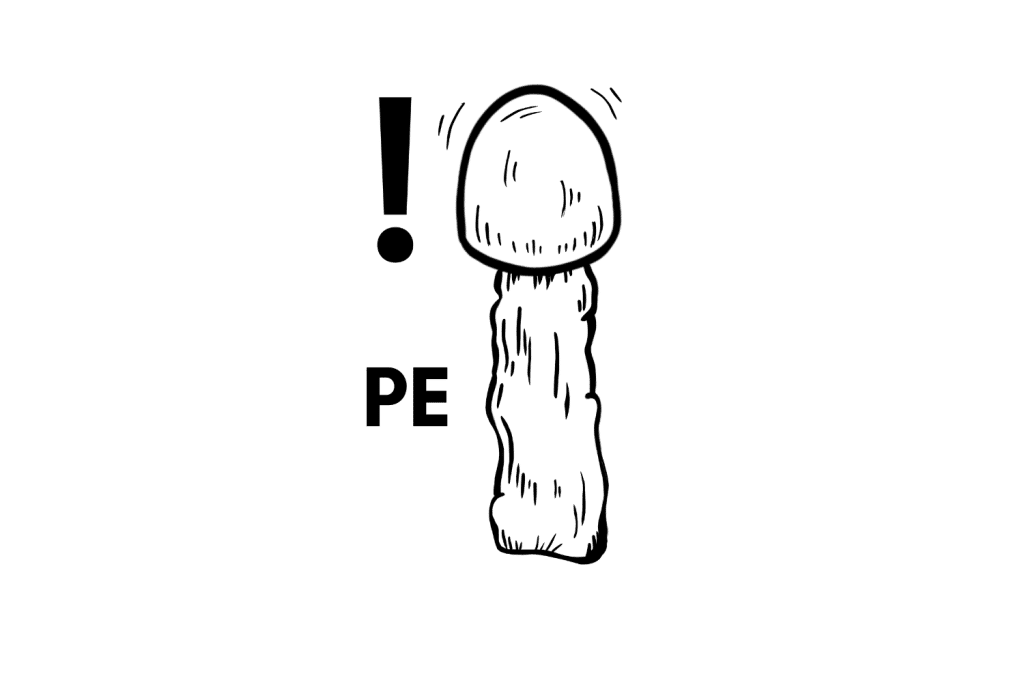
3. Penis Envy
Penis Envy is, without a doubt, one of the most famous Psilocybe cubensis strains on the planet. It gets its name from the phallic-shaped mushrooms it produces. With potency that’s incomparable to any other strain, Penis Envy is like an entirely different species. It’s capable of producing upwards of 2.90% total tryptamines but averages out at 1.15%.
This freak of nature is surprisingly easy to grow. It’s not a good one for the complete beginner, but the cultivator with a few grows under their belt can easily produce decent yields of high-quality, super-potent shrooms.
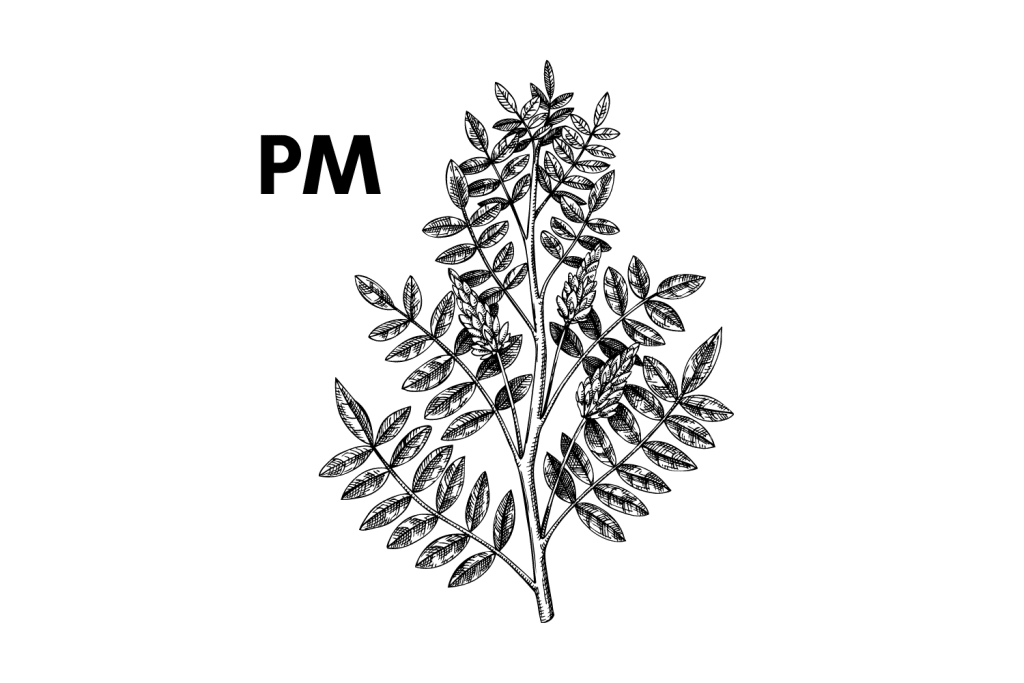
4. Plantasia Mystery
Plantasia Mystery is an unusual strain that often produces “fatasses” — short, thick-stemmed mushrooms. However, the genetics are somewhat unstable, and a single flush can have both fatasses and more regular-looking shrooms.
This is a relatively easy strain to cultivate, but it rarely offers prolific yields. However, with an “above average” potency rating, successful cultivators can expect shrooms with an average tryptamine content of 0.90% to 1.80%.
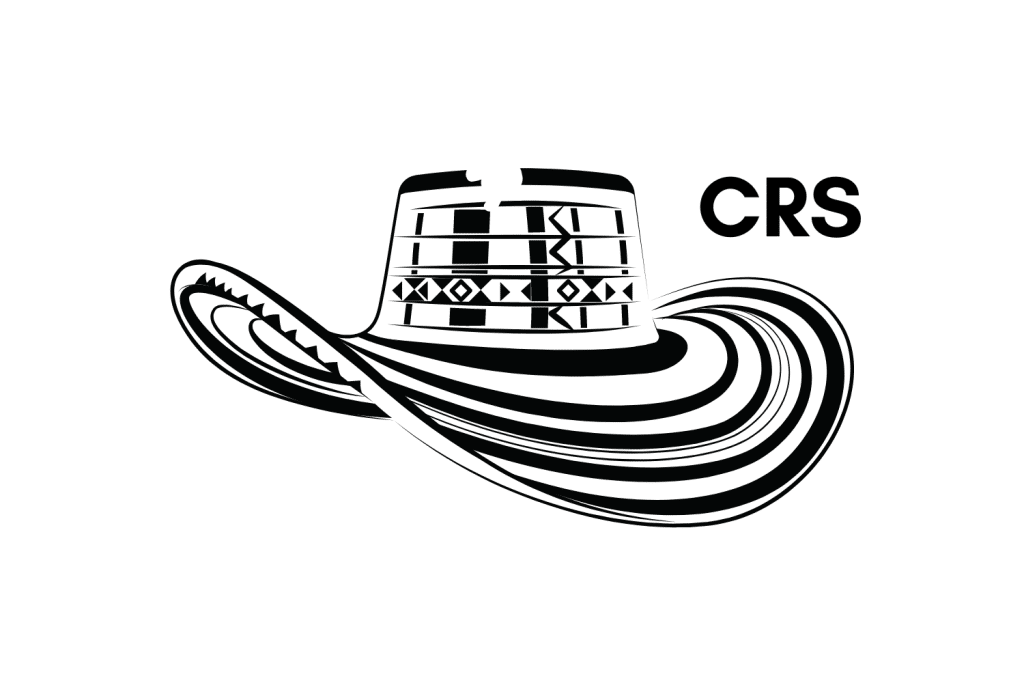
5. Colombian Rust Spore
Colombian Rust Spore — also known as Colombian Redspore — is a variation of the original Columbian Cubensis strain. As the name suggests, this strain produces rust-colored spores rather than the typical purple-black spores of typical P. cubensis strains.
These shrooms also look pretty unique — in a good way. The caps are yellowish-white, and the stems are white and slender. However, the biggest wow factor of this strain is its spore print — I recommend taking one if you decide to cultivate it.
Potency-wise, the average Colombian Rust shroom produces a total tryptamine content between 0.90% and 1.80%. The feel of these shrooms is much more “chill” and less intense on the come-up.
Frequently Asked Questions
There are plenty of questions that come with strains and growing shrooms, so here are answers to a few that come up often.
1. What’s the Most Popular Strain of Psilocybe cubensis?
It’s difficult to label a single strain as “the most popular” because so many are loved by people for different reasons. However, two strains can adopt the title “most popular cube.” These strains are Golden Teacher and Penis Envy. The reasons these strains seem so popular are quite contrasting.
The Golden Teacher strain is popular because it’s considered the easiest strain of P. cubensis to cultivate for beginners. The mushrooms have gold caps and white stems and produce decent yields over several healthy flushes. This strain produces an average psilocybin level of 0.66%, a psilocin level of 0.05%, and a total tryptamine content of 0.73%.
The Penis Envy strain is popular for its unrivaled potency. This strain produces an average psilocybin level of 0.97%, psilocin level of 0.15%, and tryptamine content of 1.15%. The fruits of this strain are phallic-shaped — hence the name “Penis Envy.”
2. Who Discovered Psilocybe cubensis?
Psilocybe cubensis has been used for millennia by indigenous peoples across the globe. However, it wasn’t “discovered” and recorded scientifically until 1906. An American mycologist called “Franklin Sumner Earle” first discovered the species growing in Cuba in 1906 [1]. It was originally recorded as “Stropharia cubensis” — a name that stuck until 1949.
The German mycologist Rolf Singer officially reclassified the species into the Psilocybe genus in 1949 [2], and when it received its binomial name, “Psilocybe cubensis” — the name we use for the species today.
The psychoactive properties of Psilocybe cubensis were discovered in the late 1950s when the Swiss chemist Albert Hofmann and American mycologist Robert Gordan Wasson identified the presence of psilocybin in the species.
3. What’s the Difference Between Psilocybe cubensis and Psilocybe Azurescens?
Psilocybe cubensis and Psilocybe azurescens are both psychedelic mushroom species that produce psilocybin. They’re both from the same genus (Psilocybe), but they’re very different.
The most notable difference between Psilocybe cubensis and Psilocybe azurescens is potency.
The average P. cubensis shroom produces an average psilocybin level of 0.63% (1.23% total tryptamines), whereas the average Psilocybe azurescens mushroom has 1.78% psilocybin (2.16% total tryptamines — that’s almost three times as potent.
Related: List of Psilocybin Mushroom Species (And Other Psychoactive Fungi)
The two species look similar, but there are some distinct differences. P. cubensis mushrooms typically have gold caps that are convex in shape and white stems. They can range in size and shape but generally adopt a medium-sized and a typical “umbrella” shape.
P. azurescens mushrooms have light brown caps with a distinct nipple on top. The caps have more of an umbonate shape rather than the convex shape of P. cubensis shrooms. The stems are white and of even thickness. They often bruise a deep blue when damaged — a clear indicator of high levels of psilocybin.
It’s important to note that the appearance of these species can vary dramatically, especially P. cubensis.
References
- Earle, Franklin Summer (1906). “Algunos hongos cubanos”. Información Anual Estación Central Agronomica Cuba (in Spanish). 1: 225–242 [240–241].
- Guzmán, G. (2019). The hallucinogenic mushrooms: diversity, traditions, use and abuse with special reference to the genus Psilocybe. In Fungi from different environments (pp. 256-277). CRC Press.

